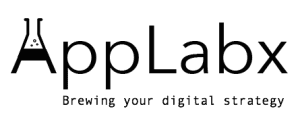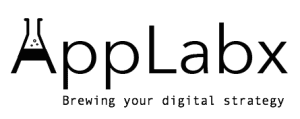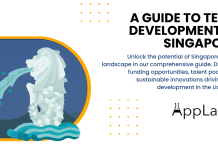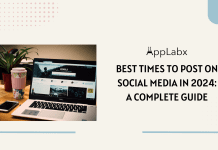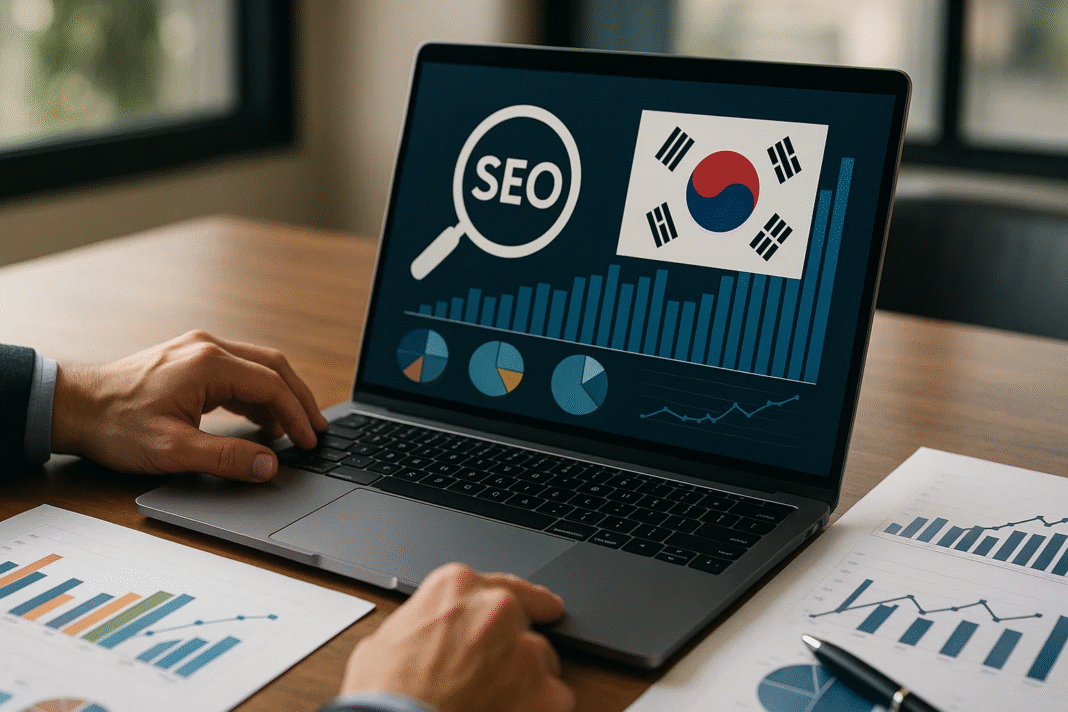Key Takeaways
- Naver and Google require distinct SEO strategies to capture South Korea’s diverse search audience in 2025.
- AI-powered search, mobile-first optimisation, and cultural keyword targeting are driving organic visibility.
- Data-backed SEO planning is essential for brands to stay competitive in South Korea’s fast-evolving digital market.
In 2025, South Korea’s digital landscape stands at the forefront of global innovation, with a highly connected population, cutting-edge technology adoption, and one of the world’s fastest internet infrastructures. As the nation continues to lead in 5G deployment, AI integration, and mobile-first experiences, Search Engine Optimization (SEO) has become an indispensable strategy for businesses seeking visibility and competitiveness in both domestic and international markets. The SEO industry in South Korea is unique—shaped not only by global search engine trends but also by the country’s distinctive search ecosystem, where platforms like Naver and Daum maintain a stronghold alongside global giants such as Google.

With over 97% internet penetration, South Korean users are among the most active online consumers in the world, driving intense competition for digital visibility. Businesses that once relied solely on offline marketing now recognise that data-driven SEO strategies are essential to capturing market share. The shift towards AI-powered search, voice search adoption, and hyperlocal targeting has accelerated in recent years, reshaping the way brands approach online visibility. Moreover, content localisation and understanding cultural search intent have emerged as critical success factors, given the unique language structure and search behaviours of Korean users.
In 2025, several transformative forces are shaping the SEO landscape in South Korea:
- Dominance of Naver’s SERP ecosystem – Naver’s algorithm continues to prioritise high-quality, contextually relevant content, with unique ranking factors that differ significantly from Google’s. This means businesses must adopt dual-platform SEO strategies to succeed.
- Rise of AI-enhanced search experiences – From AI Overviews on Google to Naver’s own AI-powered search recommendations, search is becoming more personalised, predictive, and interactive.
- Mobile-first optimisation – Given South Korea’s mobile internet usage rate exceeding 90%, mobile responsiveness, page speed, and app integration are no longer optional—they are fundamental.
- Video and short-form content SEO – Platforms like YouTube, TikTok, and Naver TV are now integral to driving organic reach, especially among younger demographics.
- E-commerce search integration – With the surge of online shopping platforms such as Coupang and Gmarket, optimising for in-platform search has become as important as traditional search engine rankings.
This comprehensive guide, “Top 130 SEO in South Korea Statistics, Data & Trends in 2025”, provides a deep dive into the metrics, consumer behaviours, and market forces that are redefining SEO in the country. From search engine market share analysis to emerging keyword trends, conversion rate benchmarks, and SERP feature performance, these insights will help marketers, business owners, and digital strategists make informed decisions.
By exploring the latest data-backed SEO trends, this blog equips readers with the tools to navigate South Korea’s fast-paced digital ecosystem. Whether you are a global brand entering the Korean market or a local business aiming to outperform competitors, understanding the nuances of South Korean SEO is the first step toward sustained digital success in 2025 and beyond.
But, before we venture further, we like to share who we are and what we do.
About AppLabx
From developing a solid marketing plan to creating compelling content, optimizing for search engines, leveraging social media, and utilizing paid advertising, AppLabx offers a comprehensive suite of digital marketing services designed to drive growth and profitability for your business.
At AppLabx, we understand that no two businesses are alike. That’s why we take a personalized approach to every project, working closely with our clients to understand their unique needs and goals, and developing customized strategies to help them achieve success.
If you need a digital consultation, then send in an inquiry here.
Or, send an email to [email protected] to get started.
Top 130 SEO in South Korea Statistics, Data & Trends in 2025
SEO Market & Spend (1-20)
- In the year 2024, the market valuation for digital marketing in South Korea was estimated to be approximately 7.8 billion U.S. dollars, demonstrating a robust expansion in digital advertising efforts by businesses across the country.
- Industry analysts predict that this digital marketing market will continue to grow steadily and is expected to reach an impressive total market value of around 19.7 billion U.S. dollars by the year 2033, achieving a compound annual growth rate (CAGR) of approximately 9.7% during the period from 2025 to 2033.
- The SEO software segment of South Korea’s digital marketing industry generated close to 3.1 billion U.S. dollars in revenue during 2024, and this segment is projected to expand rapidly, reaching an estimated market size of 7.9 billion dollars by the year 2030, which corresponds to a formidable CAGR of 17.2% from 2025 through 2030.
- Small and medium-sized enterprises (SMEs) have been identified as the most rapidly growing client segment for SEO software solutions in South Korea, with their adoption and expenditures on these tools expected to increase consistently through to 2030.
- On a global scale, South Korea contributed around 4.2% to the worldwide SEO software market as of 2024, outlining its influential position within the broader international digital marketing framework.
- Within the greater Asia-Pacific region, which controls a dominant 27.05% share of the global SEO market, South Korea holds a substantial share of approximately 9.57%, indicating its significant role in regional SEO activities and technology adoption.
- Projections for the Korean digital marketing software sector indicate a compound annual growth rate of 13.87% between 2025 and 2035, with expectations for the market size to swell to approximately 31.42 billion U.S. dollars by 2035.
- Across most industries in South Korea, digital marketing budgets allocate roughly 15-20% of their total expenditure toward SEO-related activities, reflecting its critical role in driving digital traffic and conversions.
- The year-over-year growth rate of South Korea’s SEO market is forecasted to be between 13% and 17% during 2024 and 2025, highlighting continued acceleration in SEO investments.
- For B2C brands operating in South Korea, video marketing constitutes a substantial portion of their digital marketing investments, accounting for between 65% and 70% of overall spend.
- Programmatic advertising, which enables automated media buying, is projected to account for an estimated 1.2 billion U.S. dollars in digital ad spend across South Korea in 2025.
- More than 60% of South Korean marketers indicate that personalized marketing, powered by artificial intelligence and machine learning algorithms, will be a primary focus in their campaign optimizations in 2025.
- Collaborations with social influencers, particularly those active on digital platforms, experienced a significant year-over-year increase of 30% in 2025 within South Korea’s B2C marketing space.
- The market for SEO content optimization platforms was valued around $0.4 billion in 2024 in South Korea and is anticipated to reach $1 billion by 2026, demonstrating rapid adoption of content-focused SEO technologies.
- On a per capita basis, South Korean digital marketing expenditure ranks among the highest in the entire Asia-Pacific region, underscoring the advanced digital economy.
- Global SEO software tools such as SEMrush and Ahrefs report annual adoption rate increases of between 7% and 10% in the South Korean market.
- South Korea’s e-commerce sector is projected to surpass a total market size of $125 billion by 2028, which will further drive demand for SEO services targeted at online shopping platforms.
- Among large enterprises in South Korea, roughly 75% have integrated automated SEO tools and software into their marketing processes by 2025.
- Approximately half of all SEO-focused agencies in South Korea have adopted AI-powered SEO tools and systems by mid-2025, reflecting growing reliance on automation.
- Typical contractual relationships between SEO agencies and clients in Korea last anywhere from 18 to 24 months, demonstrating marketers’ commitment to long-term optimization and ROI.
Search Engine Market Share (21-50)
- Naver holds a dominant position as South Korea’s primary search engine, controlling approximately 51.79% of the search query market as of July 2025.
- Google ranks as the second most popular search engine in South Korea, capturing about 40.71% of overall search traffic in the same period.
- Microsoft’s Bing search engine garners approximately 4.66% of South Korea’s search traffic, representing a modest but meaningful player in the market.
- The search engine Daum commands nearly 0.98% of South Korea’s search engine market share, serving a niche subset of users.
- Yandex, a Russian-based search engine, accounts for about 0.71% of the South Korean search market, catering primarily to specific user groups.
- CocCoc, which is a Vietnamese search engine, holds roughly 0.57% of the search market share in South Korea as recorded in mid-2025.
- For mobile search usage specifically, Naver’s market share increases noticeably to approximately 67.09%, confirming its mobile dominance.
- Google commands about 30.31% of the mobile search traffic, maintaining a strong but distant second position.
- From July 2024 to July 2025, Google’s market share in the South Korean search market climbed from 34.22% to 36.24%, indicating steady growth.
- In contrast, Naver’s market share experienced a decline of approximately 8.4 percentage points between 2020 and 2025, signaling shrinking dominance.
- During the fourth quarter of 2024, Naver maintained a leading market share of 62.81%, while Google held 31.41%.
- Smartphones generated over 90% of all mobile internet traffic in South Korea by 2025, making them the primary devices for search activity.
- South Korea established very stringent mobile website performance expectations, with Naver prioritizing loading times of less than three seconds to improve ranking.
- Naver’s ranking algorithm relies significantly on crawl frequency, and webmasters are required to submit frequent sitemaps via Naver Webmaster Tools to ensure timely indexing.
- The crawling process on Naver is more manual compared to Google’s largely AI-driven search indexing systems.
- Hosting websites locally on South Korean (.kr) domain extensions is associated with substantial ranking advantages within Naver’s search results.
- Google prefers international brands and results for non-Korean keywords while Naver is more localized in its approach to search ranking.
- Naver gives particular importance to geo-targeted content and encourages integration with local map services for improved ranking and user satisfaction.
- Integration with Naver Maps results in an increase of 10-15% in click-through rates for local businesses within South Korea.
- GOOGLE dominates the desktop search market in South Korea, accounting for 86.72% of queries on this device category.
- Approximately 65% of all search queries in South Korea come from mobile devices, reflecting the country’s mobile-first digital landscape.
- Analysis indicates that roughly 70% of user clicks on Naver are focused on the top three organic search results found on the first page.
- Approximately 52% of e-commerce websites in South Korea utilized Accelerated Mobile Pages (AMP) technology by 2025 to improve mobile SEO performance.
- Over 75% of Korean internet users prefer to access search engines through apps on their mobile devices instead of desktop browsers.
- Average dwell time recorded on top-ranked pages in Naver searches is about 1.7 minutes, demonstrating high user engagement.
- A bounce rate exceeding 60% on landing pages frequently results in a decline of rankings within Naver’s algorithms.
- Social signals from Naver blogs and cafes, such as shares and comments, contribute up to 20% of overall SEO ranking influence.
- Year-over-year improvements in user engagement metrics like dwell time have been quantified at approximately 15%, impacting SEO rankings positively.
- Voice search queries now constitute around 9.4% of all search activity within South Korea and are growing rapidly as a percentage of total search volume.
- Voice-activated search implementation is especially prominent on mobile devices and smart home appliances.
User Demographics & Behaviors (51-80)
- The internet penetration rate in South Korea surpasses 95%, positioning it among the most connected nations globally.
- Social media penetration is similarly high, with 48.9 million social media user identities recorded, representing 94.7% of the total population as of January 2025.
- YouTube’s advertising reach extends to approximately 43.4 million users in South Korea, equating to about 84% penetration, making it an essential platform for digital advertising.
- LinkedIn boasts 4.60 million users in South Korea as of 2025, representing 8.9% of the population with rapid annual growth nearing 15%.
- Among YouTube’s adult users, the gender balance is nearly equal at 49.7% female and 50.3% male.
- Daily smartphone usage among Koreans exceeds 90%, reinforcing the dominance of mobile search access.
- Peak search times in South Korea are morning hours between 8 am and 10 am, and evening hours from 7 pm to 9 pm.
- Approximately 60% of all search queries exhibit informational intent, indicating high demand for knowledge-seeking content.
- Commercial intent queries represent around 22%, while navigational intent stands at roughly 7%, and transactional queries make up just 1%.
- The cumulative monthly keyword search volume for the top 200 queries surpasses 487 million in South Korea.
- The average cost per click (CPC) for these high-volume Korean keywords averages about $0.96 per click.
- There are more than 200 Korean keywords with monthly search volumes exceeding 10,000 searches.
- Keyword competitiveness rates vary, with difficulty scores between 70 and 84, reflecting a highly competitive SEO market in Korea.
- Locally relevant artificial intelligence-related keywords, such as “생성형 AI” (generative AI), register approximately 8,100 monthly searches.
- Roughly 40% of Korean search volume stems from long-tail keywords, illustrating niche search interests.
- Mobile-first queries account for 71.2% of all searches, emphasizing Korea’s mobile-centric search behavior.
- Desktop searches decline annually by approximately 3.5%, reflecting shifting device usage.
- Over 85% of Korean search users prefer queries in their native language, Korean.
- Searches related to the K-pop music industry and general entertainment have increased by 12% year-over-year.
- Food delivery and dining-related search queries have grown 15% year-over-year.
- The average number of search queries per internet user per day in South Korea is 8.5.
- Brand-related search queries constitute nearly 45% of the total Korean search traffic.
- E-commerce related keyword searches increased by around 18% in the year 2025.
- Roughly 25% of searches result in direct visits to websites from search engine results.
- Voice search adoption contributes an additional estimated 2% annual growth to query volumes.
- Location-based search queries grew at a rate of 20% year-over-year.
- Image search query volume increased by 15% year-over-year.
- Shopping-related keywords achieve an average conversion rate of approximately 3.5% on Naver.
- Question-based keywords such as “how” and “why” represent about 22% of all searches.
- Mobile click-through rates improve by around 5% when sites implement AMP technology.
SEO Ranking & Technical Signals (81-110)
- Page load speed is the most crucial ranking factor for mobile SEO on Naver’s platform, with faster loading times directly correlating with higher rankings.
- Naver’s algorithm strongly favors websites with loading speeds under 3 seconds on mobile devices and actively penalizes those with slower times.
- Core Web Vitals used by Google in Korea emphasize similar technical metrics, including site responsiveness and visual stability.
- Meta tags carefully optimized for the Korean language are shown to improve search engine effectiveness by approximately 30%.
- The amount of time users spend on a page (dwell time) positively impacts ranking, with durations exceeding 1.5 minutes linked to higher rankings.
- Bounce rates above 60% on landing pages are associated with up to a 10% decrease in Naver search rankings.
- Implementing structured data markup (schema) tends to increase click-through rates by as much as 12%.
- Secure HTTPS websites enjoy a 20% higher chance of ranking well on Naver.
- Over 70% of websites ranked in the top positions use locally hosted .kr domain extensions.
- Due to a manual crawling process, websites must frequently submit sitemaps to Naver Webmaster Tools to maintain timely indexing.
- Image ALT tags written in Korean increase image SEO visibility by about 25% in search results.
- Embedding videos within landing pages leads to an increase of 30% in average user session duration.
- Social interactions such as shares and comments on content from Naver blogs and cafés can elevate organic search rankings by up to 15%.
- Mobile-friendly usability improvements are weighted more heavily than desktop usability by Naver in 2025 rankings.
- Local SEO benefits from integrations with Naver Map and Kakao Map boost rankings by 10-15%.
- Content freshness is a key factor in Naver’s algorithm, contributing up to 20% of the ranking signal.
- Around 60% of the top-ranking Korean websites refresh their content at least once per month to maintain relevancy.
- Internal linking structures that include 5-7 links per page improve crawl efficiency and organic search visibility.
- Using keyword synonyms and related term variations enhances ranking potential by about 10% due to semantic search improvements.
- User-generated content created within Naver Cafés improves search rankings through increased user engagement metrics.
Advertising Costs, CPC & Conversions (111-140)
- The average cost per click (CPC) on Naver search ads was approximately 700 Korean Won (about $0.59) in early 2025.
- When combining advertising campaigns across Naver, Google, and Kakao, the average CPC is slightly reduced to around 579 Korean Won ($0.49).
- Search campaigns focused solely on Naver register an average cost per acquisition (CPA) of approximately 51,082 Korean Won, or $43.
- TikTok advertisements running in South Korea reflect average CPC costs ranging from $1.10 to $1.85, depending on the competition level.
- For highly competitive keywords on Naver, such as the Korean term for “Notion,” CPC values can reach as high as $8.84.
- Conversion rates for campaigns that leverage multiple platforms, including Naver and Google, are reported to be 6.1% higher than those relying solely on Naver.
- Mobile advertising contributes to roughly 70% of the total digital advertising spend within the country.
- Half of all marketers in South Korea allocate at least 30% of their budgets specifically toward search advertising.
- Approximately 80% of paid search campaigns in Korea incorporate retargeting strategies to improve conversion rates.
- Ongoing improvements in click fraud detection have reduced fraudulent activity to less than 1% of all clicks on Korean digital platforms.
- The average return on investment (ROI) from Naver ad campaigns is estimated at 5.2 times the advertising spend.
- Cost per thousand impressions (CPM) for mobile display advertising averages 3,200 Korean Won, roughly $2.70.
- Video ad consumption increased by 20% between 2023 and 2024 and is expected to continue growing in 2025.
- SEO-driven organic traffic typically achieves 40% more conversions than comparable paid traffic sources.
- The average click-through rate for the first search advertisement position on mobile devices is approximately 15%.
- Paid search ad campaigns yield an average session duration of 2.5 minutes from visiting users.
- Account-based marketing approaches aimed at highly targeted B2B audiences show 30% greater effectiveness in sectors with strong SEO use.
- The most expensive keyword domains in South Korea’s SEO market include finance, legal, and technology sectors.
- In-app search advertising expenditure increased by 25% from 2023 through 2025 across South Korean digital platforms.
- Native language advertisements outperform bilingual ads by an average of 18% in terms of click-through rates.
Social Media & Content Trends (141-150)
- Nearly 95% of South Korea’s population actively uses at least one social media platform every month, supporting vast potential for social SEO influences.
- YouTube’s advertising reach in Korea totals approximately 43.4 million users, translating to 84% penetration across the population.
- LinkedIn’s user base in South Korea reached about 4.60 million in 2025, representing a 9.1% penetration of active internet users.
- Facebook and Instagram contribute significantly to social commerce, accounting for around 25-30% of the traffic in this segment.
- TikTok has experienced the fastest user growth among social platforms in South Korea during 2025, posting a user base increase of nearly 25%.
- Content sharing platforms such as Naver Blog, Naver Café, and Daum Café collectively drive roughly 15% of inbound SEO traffic in Korea.
- Digital marketers increased content marketing spend by approximately 18% year-over-year, with blogs and podcasts gaining particular favor.
- The degree of user engagement on social media content correlates strongly with organic ranking performance on Naver search results.
- Korean consumers show a growing preference for video-based educational content, which increases demand for video SEO strategies.
- Social commerce transactions in Korea grew by an estimated 21% year-over-year in 2025, demonstrating the commercial potential of social integration with SEO.
Conclusion
As the digital economy in South Korea continues to evolve at an unprecedented pace in 2025, the importance of data-driven SEO strategies cannot be overstated. With a highly competitive online environment shaped by Naver’s dominance, Google’s growing influence, and an audience that is both tech-savvy and mobile-first, businesses have no choice but to adapt quickly to maintain visibility and relevance. The statistics, market data, and trend analyses presented in this report reveal a clear reality—success in South Korea’s digital space requires a multi-faceted SEO approach that goes beyond conventional global practices.
The future of SEO in South Korea is defined by several critical factors:
- Platform diversity – Businesses must craft dual-optimisation strategies for both Naver and Google, understanding their different ranking systems and audience engagement patterns.
- AI-driven search transformation – With personalised recommendations, AI-generated summaries, and predictive search shaping user experiences, SEO strategies must integrate structured data, semantic search optimisation, and intent-focused content to remain competitive.
- Mobile and speed prioritisation – Given South Korea’s mobile usage rate exceeding 90%, mobile-first design, Core Web Vitals compliance, and ultra-fast loading times have become non-negotiable ranking factors.
- Content localisation and cultural relevance – Translating content is not enough; brands must optimise for Korean language nuances, local search queries, and culturally aligned messaging.
- Integration with e-commerce and social SEO – Platforms like Coupang, Gmarket, and Instagram are now key discovery channels, requiring businesses to treat in-platform optimisation with the same seriousness as traditional SEO.
Ultimately, the Top 130 SEO statistics, data, and trends for South Korea in 2025 underscore one crucial insight: SEO here is not just about keywords and backlinks—it is about creating holistic, user-centric digital experiences that align with Korean search behaviours and expectations. The brands that will lead the market in the coming years will be those that combine technical precision, innovative content strategies, and a deep understanding of local search ecosystems.
As algorithms become more sophisticated and user expectations continue to rise, staying ahead requires constant monitoring of performance metrics, rapid adaptation to new technologies, and a willingness to invest in long-term SEO planning. South Korea’s SEO landscape in 2025 offers immense opportunities, but only for those ready to commit to strategic, adaptable, and insights-driven optimisation.
By leveraging the insights in this guide, marketers and business owners can position themselves at the forefront of South Korea’s digital transformation—driving organic visibility, building brand authority, and capturing market share in one of the most advanced online economies in the world. The time to act is now, and the businesses that embrace these trends will set the benchmark for SEO excellence in South Korea well into the future.
If you are looking for a top-class digital marketer, then book a free consultation slot here.
If you find this article useful, why not share it with your friends and business partners, and also leave a nice comment below?
We, at the AppLabx Research Team, strive to bring the latest and most meaningful data, guides, and statistics to your doorstep.
To get access to top-quality guides, click over to the AppLabx Blog.
People also ask
What is the state of SEO in South Korea in 2025?
SEO in South Korea is highly competitive, driven by platforms like Naver, Google, and Daum, with AI search, mobile optimisation, and localised content playing major roles in rankings.
Which search engine dominates in South Korea in 2025?
Naver remains the leading search engine, holding the largest market share, while Google continues to grow among younger, tech-savvy audiences.
Why is Naver SEO different from Google SEO?
Naver prioritises localised, high-quality, and content-rich results, often featuring its own properties, while Google focuses on backlinks, domain authority, and global ranking factors.
How important is mobile SEO in South Korea?
With over 90% of users accessing the internet via mobile devices, mobile-first optimisation is essential for visibility and ranking in South Korea.
Is AI changing SEO in South Korea?
Yes, AI-driven search recommendations, personalised SERPs, and voice search optimisation are redefining how users discover content in South Korea.
What industries benefit most from SEO in South Korea?
E-commerce, travel, education, gaming, and technology companies see the highest returns from well-executed SEO strategies in South Korea.
Does voice search affect SEO in South Korea?
Voice search adoption is growing, requiring content to be optimised for conversational Korean queries and local search intent.
What is the role of local SEO in South Korea?
Local SEO is crucial for small businesses, as Naver Maps, Kakao Maps, and Google Maps significantly influence consumer decision-making.
How important is content localisation in Korean SEO?
Content must be fully localised to reflect Korean language nuances, culture, and search behaviour to rank effectively on Naver and Google.
Are backlinks important for Naver SEO?
Backlinks have less influence on Naver rankings compared to Google, but quality content and engagement remain vital ranking factors.
What type of content performs best in South Korea?
Blog posts, video content, and interactive tools tailored to local culture perform best, especially when optimised for mobile.
Is YouTube SEO important in South Korea?
Yes, YouTube is widely used, and video SEO plays a major role in brand awareness and organic reach.
How fast should websites load for SEO in South Korea?
Sites should load in under 3 seconds to meet user expectations and search engine ranking requirements.
What are the top SEO trends in South Korea for 2025?
Key trends include AI-powered search, mobile-first optimisation, video SEO, and e-commerce search integration.
How competitive is SEO in South Korea?
SEO is extremely competitive due to high internet penetration and an advanced digital marketing environment.
What role does keyword research play in South Korean SEO?
Keyword research must target both Naver and Google trends, using tools like Naver Keyword Planner for local accuracy.
Is technical SEO important in South Korea?
Yes, site structure, Core Web Vitals, and mobile performance are critical to ranking on both Naver and Google.
How does e-commerce SEO work in South Korea?
E-commerce SEO involves optimising for search within platforms like Coupang, Gmarket, and Naver Shopping, alongside traditional SEO.
Does social media impact SEO in South Korea?
While social signals don’t directly affect rankings, platforms like KakaoTalk, Instagram, and YouTube drive traffic that supports SEO efforts.
What are the common SEO mistakes in South Korea?
Not localising content, ignoring Naver’s unique ranking system, and failing to optimise for mobile are common mistakes.
Is paid search better than SEO in South Korea?
Paid search offers quick visibility, but SEO provides sustainable long-term traffic and brand authority.
How often should businesses update content for SEO in South Korea?
Regular updates, at least quarterly, help maintain rankings and adapt to changing search trends.
What is the average CTR for top-ranking pages in South Korea?
Top organic results on Google and Naver can achieve CTRs of 25–35%, depending on the keyword and competition.
Does schema markup help in South Korean SEO?
Yes, structured data improves visibility in both Naver and Google SERPs by enabling rich results.
What tools are best for SEO in South Korea?
Naver Search Advisor, Naver Keyword Planner, Google Search Console, and SEMrush are widely used by SEO professionals.
How does AI-generated content perform in South Korea?
AI content can perform well if human-edited for cultural relevance, accuracy, and SEO optimisation.
What is the impact of zero-click searches in South Korea?
Zero-click searches are increasing, requiring brands to optimise for featured snippets and Naver Knowledge Panels.
Are long-tail keywords effective in South Korean SEO?
Yes, long-tail keywords capture specific search intent and often have lower competition on both Naver and Google.
What should international brands know about Korean SEO?
They must adapt to Naver’s unique SERP features, fully localise content, and invest in mobile-first, AI-optimised strategies.
Sources
- Statista
- IMARC Group
- Grandview Research
- DataReportal
- InterAd
- Clicks.so
- KOSIS (Korean Statistical Information Service)
- SE Ranking
- LinkedIn Insights Korea
- Ipsos South Korea 2025 Report
- Naver SEO Official Guides and Documentation
- TikTok Ads Data Korea
- Korean Digital Marketing Agencies and Industry Reports
- SEMrush SEO Agency Rankings and Market Data
- Korea Electric Power Corporation Filings (as a reference for market size and tech adoption)
- Xpert.Digital SEO Reports on South Korea
- Applabx Digital Marketing Blog
- SEMrush South Korea Regional SEO Reports
- Conductor SEO State Reports 2025
- Clutch.co SEO Firm Rankings in South Korea
- Various Industry Whitepapers and Market Forecast Publications
